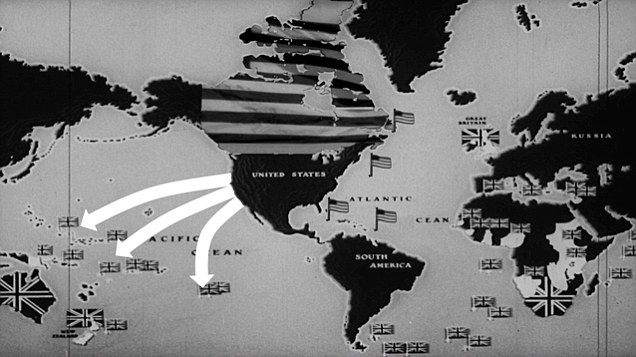A dastardly double-cross from the Yanks is uncovered in this week’s weird Wikipedia article…
Joint Army and Navy Basic War Plan Red was a war plan created by the United States Army and Navy in the late 1920s and early 1930s to estimate the requirements for a hypothetical war with Great Britain. The plan discussed the potential for fighting a war with Britain and its Empire and outlined those steps necessary to defend the Atlantic coast against any attempted mainland invasion of the United States. It further discussed fighting a two-front war with both Japan and Britain simultaneously (as envisioned in War Plan Red-Orange).
War Plan Red was developed by the United States Army following the 1927 Geneva Naval Conference and approved in May 1930 by the Secretary of War and the Secretary of Navy and updated in 1934–35. In 1939 on the outbreak of World War II and Britain’s war against Nazi Germany, a decision was taken that no further planning was required but that the plan be retained. When War Plan Red was declassified, it caused a stir in American-Canadian relations because Canada, codenamed “Crimson” in the plan, was to have been the principal target of American forces.
The plan suggested that in a conflict the British would initially have the upper hand by virtue of the strength of the Royal Navy. The plan further assumed that Britain would probably use its Dominion in Canada as a springboard from which to initiate a retaliatory invasion of the United States. The assumption was taken that at first Britain would fight a defensive battle against invading American forces, but that the US would eventually defeat the British by blockading the United Kingdom and economically isolating it.
Because of the Empire’s historical strength, the United States had traditionally planned for a defensive war with the British. War Plan Red recommended continued use of this strategy even as American military strength grew to match Britain’s. Its authors saw conquering Canada as the best way to attack the British Empire and believed that doing so would cause Britain to negotiate for peace. A problem with the plan was that it did not discuss how to attack the Empire if Canada declared its neutrality, which the authors believed was likely.
Based on extensive war games conducted at the Naval War College, the plan rejected attacking British shipping or attempting to destroy the British fleet. The main American fleet would instead stay in the western North Atlantic to block British-Canadian traffic. The navy would wait for a good opportunity to engage the British fleet, and if successful would then attack British trade and colonies in the Western Hemisphere.
American war planners had no thoughts of returning captured British territory. “The policy will be to prepare the provinces and territories of CRIMSON and RED to become states and territories of the BLUE union upon the declaration of peace.”
War Plan Red was not declassified until 1974.












The invasion of Canada was to have been spearheaded by troops posing as tourists crossing the border with skis in July and gaining local confidence by telling everyone “Nice little country y’all have here”.
I have found that “what is that in real money” gets a reaction in Toronto–or did, for it was in the late 1980s I tried it.
I’m not sure where a double-cross comes in, particularly given that the plan was shelved in 1939.
“War Plan Red recommended continued use of this strategy even as American military strength grew to match Britain’s.”
The US Army ended the 1930s with about 400 thousand men, including the National Guard and reserves. That is not a lot more than the number of British soldiers evacuated from Dunkirk. The real expansion of the US Army began with the peacetime draft of 1940.
Sounds like the plan’s objectives have largely been achieved…